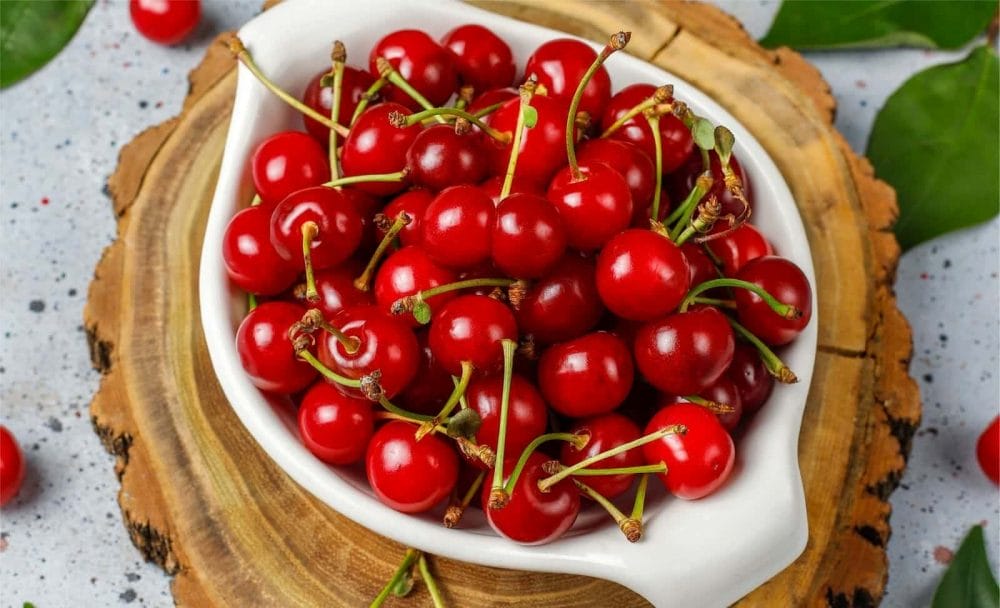
Maintaining optimal health requires careful consideration of one’s dietary choices. This is especially true when confronted with specific health concerns. High uric acid levels can result in gout, which is a painful form of arthritis. Dietary modifications are crucial for individuals grappling with elevated uric acid levels in managing this condition and preventing its associated complications.
This article explores 15 foods you should avoid with high uric acid. Understanding the impact of these dietary choices will help you take proactive steps to mitigate the risks and discomfort associated with hyperuricemia while working towards improved overall health.
What does high uric acid in the body indicate?
High uric acid levels in the body, or hyperuricemia, can serve as a significant indicator of various health concerns. Primarily, elevated uric acid levels often signal an increased risk of developing gout, a painful form of arthritis that results from the crystallisation of urate crystals in joints. Additionally, hyperuricemia indicates kidney stones, as excessive uric acid can form urate crystals in the kidneys, leading to stone formation. Furthermore, persistent uric acid levels may be a precursor to other metabolic disorders, like hypertension and insulin resistance. Therefore, monitoring and managing uric acid levels is crucial for preventing the discomfort of gout and addressing broader health implications. [1]
Factors Responsible for High Uric Acid You Need to Know
There are several factors which lead to the concentration of high Uric Acid in the body. The most significant causes are the following:
- Excessive Alcohol Intake: The kidneys prioritise the removal of waste from alcohol metabolism over uric acid. This causes uric acid to remain in the body.
- Purine-rich Diet: A diet that includes high levels of purines, found in food like meat, beans, peas, mushrooms, seafood etc. can lead to high levels of uric acid in the blood. This is because the breakdown of these foods by the body leads to the production of uric acid.
- Kidney Inefficiency: In some cases, an individual’s kidneys may not be able to filter out waste products effectively. This can lead to uric acid remaining in the body, instead of being removed as urine. Therefore, kidney damage or disease can lead to hyperuricemia.
- Hypothyroidism: This refers to a condition in which the thyroid glands may be underactive. In this condition, the flow of plasma to the kidneys may be reduced & filtration by the kidneys may be impaired. This can lead to high uric acid.
- Obesity: Obesity has been shown to cause hyperuricemia in many cases.
- Cancer: Certain types of cancers or chemotherapy may cause certain cells to be rapidly released into the bloodstream & can be another cause of hyperuricemia.
Symptoms of The High Uric Acid Level
The following symptoms may indicate a High Uric Acid:
- Pain and inflammation in the joints also known as Gout
- Dryness of skin
- Unexplained fatigue
- Nausea and excessive burping.
- Blurred vision.
- Muscle cramps.
- Metal or stone tastes in the mouth.
15 High Uric Acid Food to Avoid
When dealing with high uric acid levels, it is essential to make informed dietary choices to help manage this condition effectively. Here are 15 foods to avoid with high uric acid. [1]
- Red meat
Beef, pork, chicken, and lamb are high in purines, which can contribute to increased uric acid levels.
- Organ meats
The liver and other organ meats are rich in purines and should not be a part of the diet.
- Seafood
It includes certain seafood like anchovies, sardines, mackerel, and sprats.

- Shellfish
Shrimp, crab, and mussels are purine-rich seafood items you should avoid.
- Meat and yeast extracts
Avoid marmite, Bovril, and commercial gravy, as these can exaggerate your condition.
- Sugary beverages
Soda, fruit juices, and sugary drinks can lead to weight gain, which may worsen gout symptoms.
- Alcohol
Beer, in particular, can increase the risk of gout attacks. Wine and spirits need consumption in moderation.
- High-fructose corn syrup
Found in processed food items and sugary drinks, this sweetener can increase uric acid levels.
- Excessive fructose
Avoiding fruits with high fructose content and sweetened fruit juices is better.
- Mushrooms
It is a purine food whose consumption you should limit to prevent flaring of gout symptoms.
- Processed foods
Foods with artificial additives, preservatives, and flavour enhancers can lead to inflammation.
- Noodles and pasta
Noodles and pasta can worsen metabolic conditions associated with high uric acid levels.
- High-fat dairy
Full-fat dairy products may contribute to inflammation and need consumption in moderation.
- Certain vegetables
Some vegetables, like spinach, asparagus, and cauliflower, are moderately high in purines and should be eaten in limited quantities.
- Soy products
Soybeans and soy-based foods may contain purines that can elevate uric acid levels, so it’s advisable to consume them in moderation.
Food Items Considered Healthy When You Have High Uric Acid
A well-considered diet can be a powerful tool in managing high uric acid levels. Here are some food items and dietary considerations that are healthy for individuals with high uric acid. [1]
- Foods rich in vitamin C
Studies have shown that men with a higher vitamin C diet are less likely to develop gout. Vitamin C as a dietary supplement (500 to 1500 mg/day) can also reduce blood uric acid levels. Incorporating vitamin C-rich foods like citrus fruits (oranges, lemons), strawberries, and kiwi can be beneficial.
- Sour cherries or sour cherry juice
Sour cherries are a natural remedy for gout due to their potential anti-inflammatory properties. Consuming sour cherries or sour cherry juice may help reduce gout-related symptoms. However, it’s essential to include them in moderation as part of a balanced diet.

- Plenty of fruits and vegetables
A diet of fruits and vegetables offers essential vitamins, minerals, and antioxidants to reduce inflammation. Opt for various colourful fruits and vegetables like berries, apples, broccoli, and leafy greens to ensure a diverse range of nutrients.
- Whole grains
Including plenty of whole grains, such as whole wheat bread, brown rice, and oats, can provide essential fibre and nutrients. Whole grains contain healthy carbohydrates that can help maintain stable blood sugar levels.
- Potatoes
Potatoes, when prepared healthily (boiled or baked, not fried), can be a nutritious addition. They are a good source of complex carbohydrates and vitamin C.
- Hydration
Staying hydrated by drinking water is crucial for diluting uric acid in the body and facilitating its excretion through urine. Aim to consume at least 8-10 large glasses of water daily.
Ayurveda and managing high uric acid
According to Ayurvedic principles, Gouty Arthritis can be due to Vata-Pitthadhika Vatarakta. Vata and Rakta are the primary factors contributing to the disease. In this context, Ayurveda views the joints (sandhi) as the primary site of manifestation. A case study demonstrated the effectiveness of Ayurvedic treatments for this condition.
The patient underwent therapies including Snehana (oleation), Mridu Swedana (mild sedation), Ksheera Vasthi (enema with medicated milk) on a seven-day schedule, Upanaha Sweda (poultice) for seven days, and Samana Aushadhi (oral Ayurvedic drugs) for one month. Notably, there was a significant clinical improvement in the patient’s quality of life after 30 days of treatment.
The case report highlights the potential of Ayurvedic principles, specifically Vataraktha Chikitsa Siddhanta, as a promising approach for treating gouty arthritis characterised by elevated serum uric acid levels. [2]
A low-purine and low-fat diet can help in maintaining a healthy body weight and reduce the concentration of Uric Acid in the body.
In this segment, we’ll discuss the ideal meal to consume to reduce the symptoms of Uric Acid.
Early Morning
- Curry leaves water
- After 15 Min– Green tea/ Herbal tea
Breakfast
Veg Semolina (Veg Upma)/ Broken Wheat Porridge (Veg Dalia)/ Veg Poha (Rice Flakes)/ Brown Bread Sandwich/ Stuffed Chapati/ Chapati with Vegetables or Dal + 1 Egg (White portion only)
Mid-Morning
Fruit/ Herbal tea/ Green Tea/ Salad/ Coconut water
Lunch
Plain Chapati/ Boiled Rice + Vegetable + Dal
Evening
Herbal tea/ Green tea/ Rice flakes
Pre-Dinner
Soup (Homemade)
Dinner
Plain chapati/ Boiled Rice/ Veg Khichdi/ Vegetable + Dal
FAQs
1. What foods to avoid for uric acid?
When managing high uric acid levels, avoiding or limiting foods high in purines is advisable, as they can contribute to elevated uric acid. These include red meat (beef, pork, lamb), organ meats (liver, kidney), certain seafood (anchovies, sardines, mussels), shellfish (shrimp, crab), processed meats (bacon, sausages), and high-fructose corn syrup found in processed food items and sugary drinks.
2. What foods help flush uric acid?
To help flush uric acid from the body, focus on a diet that includes foods with anti-inflammatory and diuretic properties. Some options include:
• Cherries
Cherries, especially tart cherries or sour cherry juice, can reduce uric acid levels and gout symptoms.
• Berries
Blueberries, strawberries, and raspberries contain rich antioxidants and can help reduce inflammation.
• Water
Staying well-hydrated helps dilute uric acid and encourages its elimination through urine.
• Citrus fruits
Oranges, lemons, and grapefruits contain vitamin C, which may aid in reducing uric acid.
• Leafy greens
Foods like spinach and kale can help alkalize the body and reduce uric acid levels.
3. How do you reduce uric acid?
Reducing uric acid levels involves a combination of dietary and lifestyle changes. Here are some critical steps:
• Dietary modifications
Limit or avoid high-purine foods. Focus on fruits and vegetables. Incorporate foods that help reduce uric acid, like cherries and citrus fruits.
• Stay hydrated
Drink lots of water to promote excreting uric acid through urine.
• Control weight
Maintain a healthy weight with the help of a balanced diet, as obesity can complicate things further.
• Limit alcohol
Reduce alcohol consumption, especially beer and spirits.
4. Which fruits to avoid if uric acid is high?
While fruits are generally considered healthy, some individuals with high uric acid levels may need to limit their intake of fruits that are higher in fructose, which can contribute to uric acid production. Fruits to consume in moderation or avoid include sweetened fruit juices, dried fruits like raisins and apricots, and high-fructose fruits like mangoes and pineapples. However, cherries, berries, and citrus fruits can benefit individuals with high uric acid levels due to their anti-inflammatory properties and vitamin C content.
Conclusion
Managing high uric acid levels is a multifaceted endeavour requiring careful consideration of dietary choices and lifestyle modifications. Avoiding or limiting foods high in purines and refined sugars while incorporating anti-inflammatory and diuretic foods into one’s diet forms the foundation of dietary management.
Furthermore, maintaining a healthy weight, staying hydrated, and moderating alcohol consumption are essential lifestyle adjustments. While these strategies can contribute to mitigating high uric acid-related conditions, consulting a healthcare professional to develop a personalised plan is crucial.
Disclaimer
The information provided here does not intend to replace professional advice or treatment.













